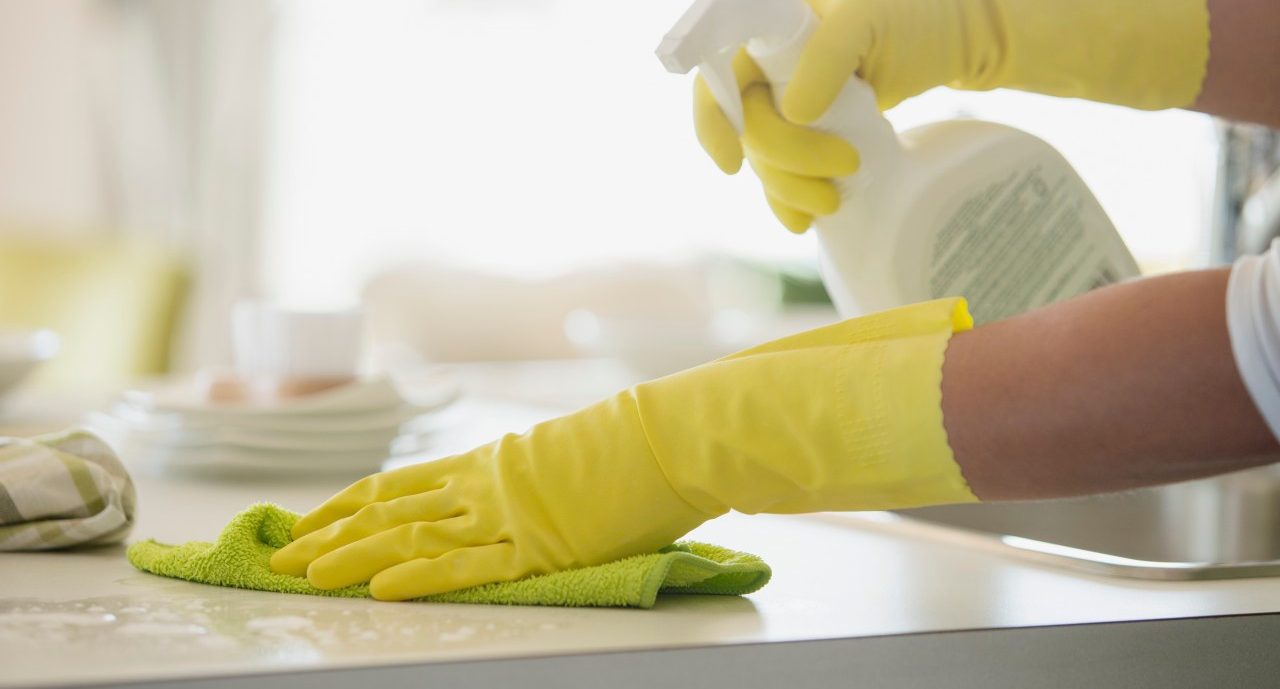How Often You Should Clean Everything in Your House

The toilet is not the dirtiest thing in your home.
Spring cleaning gets a lot of hype every year, but living spaces need more than an occasional scrub to stay clean. According to studies released in the past several years, your home harbors more bacteria, fungus, and mold than you know… and not always in the places you expect.
YOU MIGHT ALSO LIKE: Spring Clean to Keep Allergens Out of Your Home
Bathroom
Most families clean their toilets and bathroom sinks regularly, so bathrooms are some of the cleanest spots in the house. But bacteria build up in other areas.
One study found Staphylococcus bacteria (which causes staph infections) in 26 percent of bathroom tubs; a separate study found Staphylococcus colonies on bathroom towels. Damp towels also breed mold and fungus, which can exacerbate allergies, asthma, and chronic obstructive pulmonary disease.
To keep your bathroom sanitary, scrub the whole space weekly, not just the toilet and sink, using bleach or vinegar to kill bacteria. The Simmons College Center for Health and Hygiene recommends washing towels at least once a week. If anyone in your home is sick or suffers from respiratory problems, the water in your washer should be at least 140 degrees.
You can also keep your bathroom cleaner with one simple trick: closing the toilet lid before you flush. “Flushing… causes aerosols, containing fecal bacteria, to land on items near the toilet,” according to Rob Donofrio, PhD, director of microbiology at NSF International. By closing the lid, you keep bacteria in the toilet.
Kitchen
Surprisingly, kitchens are much dirtier than bathrooms.
A study by NSF International found Salmonella and E. coli bacteria on 18 percent of cutting boards, 32 percent of countertops, 45 percent of kitchen sinks, and 75 percent of kitchen sponges. Nearly 50 percent of coffee makers were harboring yeast and mold, and blender gaskets weren’t much cleaner.
To prevent bacteria and mold from growing in your kitchen, wash pots and cooking utensils after every use, either using soap and hot water or in the dishwasher. Disassemble small appliances, such as your blender and coffee maker, to clean them. After preparing a meal, don’t just rinse your sink; scrub it with soap to remove any lingering bacteria.
Sponges filled with food particles breed bacteria and mold, and cleaning with a dirty sponge won’t do much good. Rinse and wring out your sponge thoroughly every time you use it. NSF International also recommends microwaving your sponge for two minutes every day to kill bacteria and replacing it every two weeks. Dishcloths are an even safer option, since these can be machine washed. Rinse dishcloths with hot water after every use and change them every two days.
YOU MIGHT ALSO LIKE: Are “Safe” Plastic Drinking Bottles Really Not Safe?
Bedroom
Washing your sheets every month isn’t enough, Philip M. Tierno, Jr., PhD, of New York University's Langone Medical Center told The Wall Street Journal. That’s because human skin cells build up in sheets and become food for dust mites. Sheets also absorb sweat from your skin, which can grow mold and fungus. All of this debris is dangerous for your respiratory tract. Ideally, according to Tierno, you should wash bedding every week in hot water.
Your mattress may also be full of dust mites and mold; this is especially dangerous if you have allergies or asthma. To keep your mattress clean, vacuum the top every six months, and use a synthetic mattress cover that you wash weekly.
Pillows are a breeding ground for fungus; one study found that the average pillow has 4 to 16 types of fungus growing on it. To keep from breathing in those spores, wash your pillowcases every week in hot water. If you don’t have allergies to down, invest in feather pillows; they grow less mold than synthetic materials.
Living room
The wall-to-wall carpets in your living room may be full of dust, mites, and fungus, so the National Center for Healthy Housing recommends avoiding carpets if anyone in your family has respiratory trouble. If you do have carpets, vacuum them every week using a high efficiency particulate air (HEPA) filter.
Other dirty spots in the living room are the TV and video game controllers. One study found that over 50 percent of controllers have yeast and mold growing on them, and 14 percent have Staphylococcus bacteria. To keep these surfaces clean, wipe them down weekly with a light cleaner and a damp cloth.
Finally, your computer desk is probably one of the dirtiest things you own. A study shared by the National Center for Health Research found most desktops have 400 times more bacteria than the average toilet seat. These bacteria are transferred to your desk and computer from your hands, usually after you touch your nose or mouth. To keep your computer and your workspace sanitary, clean your keyboard and desk with antibacterial wipes every week.
And you might want to eat your meals at the table, rather than in front of the computer.
Updated:
August 09, 2016
Reviewed By:
Janet O’Dell, RN